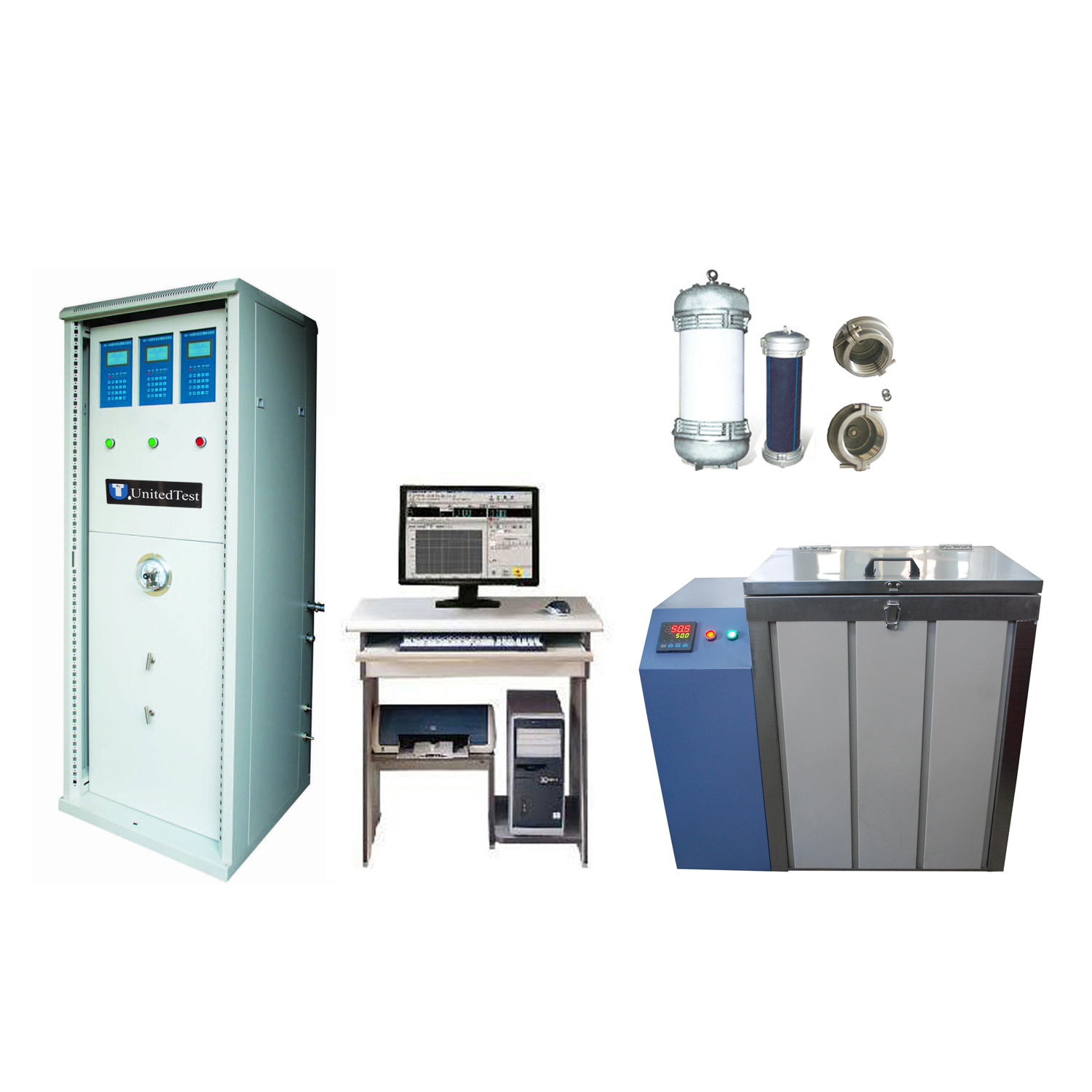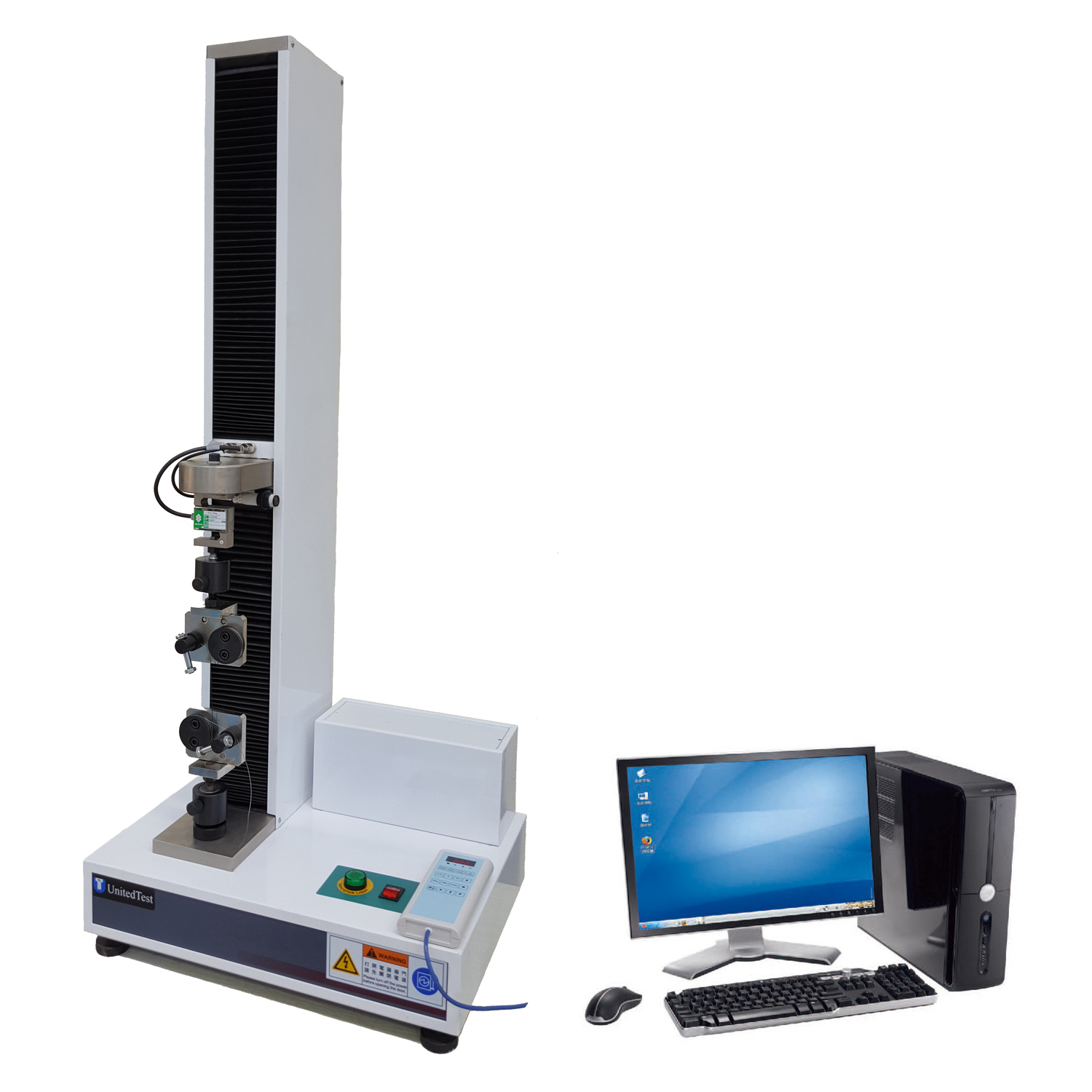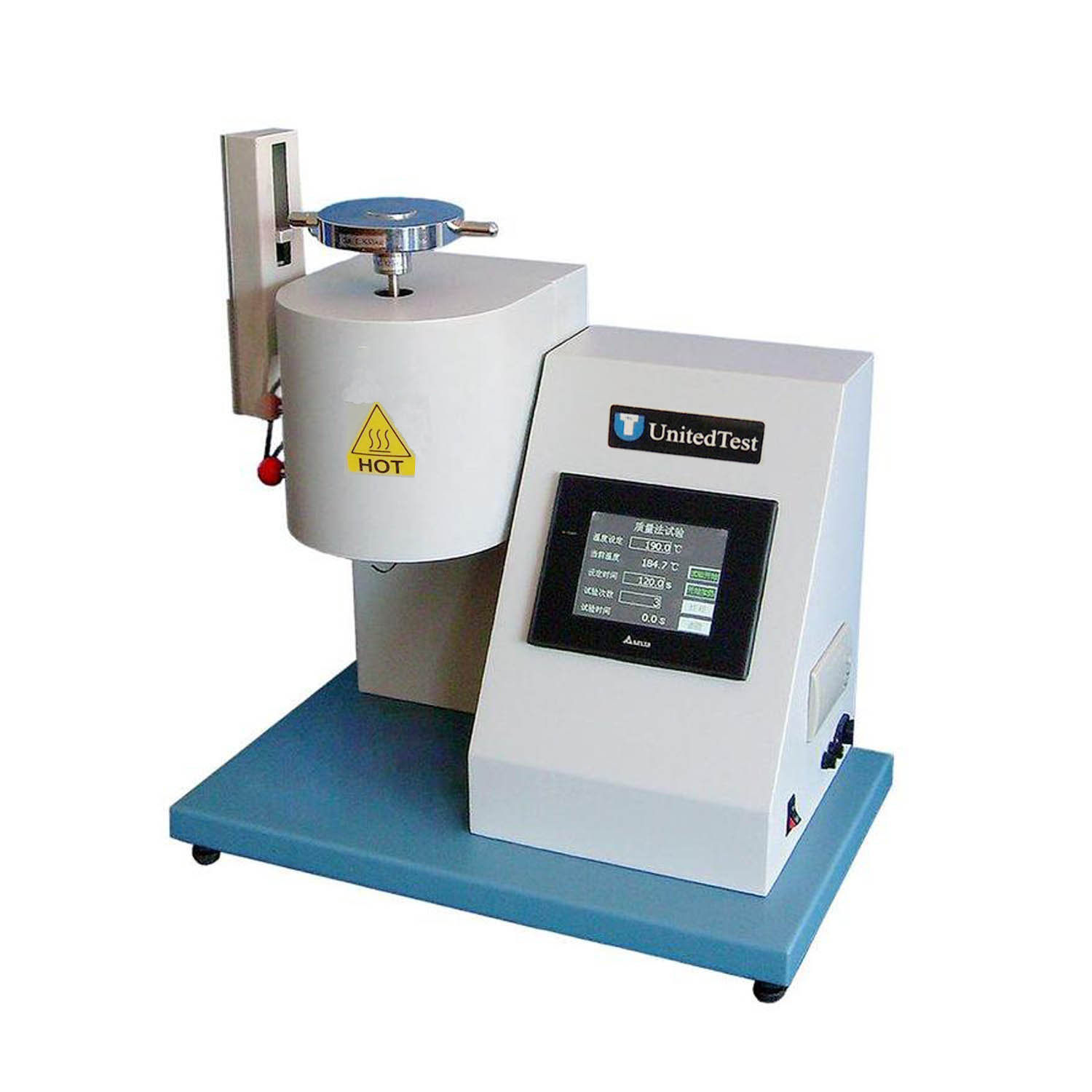ISO 4437-1 tensile, Hydrostatic pressure test for Plastics piping systems for the supply of gaseous fuels — Polyethylene (PE) ISO 4437-1:2014 specifies the general properties of polyethylene (PE) compounds for the manufacture of pipes and fittings intended to be used for the supply of gaseous fuels. It also specifies the test parameters for the test methods referred to in this International Standard.
Tensile testing machine (UnitedTest WDW-50Y Electronic Universal Testing Machine):
Oxidation induction time test (UnitedTest UT3335 Differential scanning Calorimeter, Oxidative Induction Time tester): The oxidation induction time of the material is determined by differential scanning calorimetry and other methods, and the oxidation resistance of the material is evaluated to ensure that the material can resist oxidative degradation in long-term use and ensure the stability and safety of the pipeline system.
Melt mass flow rate test (UnitedTest MFI404 melt flow index tester): According to the relevant standard methods, the melt mass flow rate of polyethylene material at a certain temperature and pressure is determined to characterize the processing performance and molecular weight distribution of the material, so as to ensure that the material has appropriate processing performance and can meet the requirements of pipeline production process.
Hydrostatic Pressure test (UnitedTest HYD-103B Pipe Hydrostatic Pressure testing Machine and end cap): including short-term hydrostatic test and long-term hydrostatic test. The short-term hydrostatic test is to apply a certain hydrostatic pressure to the pipe at a specified temperature and time to observe whether the pipe is damaged or not, so as to test the ability of the pipe to withstand pressure in the short term. The long-term hydrostatic test is to conduct a long-term hydrostatic test on the pipe under simulated actual use conditions, usually lasting several years or even decades, to evaluate the pressure resistance and life of the pipe during long-term use.
Slow crack growth resistance test (UnitedTest ESC-95 ESCR Environmental Stress Cracking Resistance tester) : It is very important to evaluate the ability of the pipe to resist slow crack growth under specific test conditions by using methods such as incision pipes, which is very important to ensure that even if there are small cracks in the pipe, it can prevent the rapid expansion of the pipe and lead to pipe failure in long-term use.
Rapid crack propagation test: The resistance of the pipe when it is subjected to rapid crack propagation is determined through full-scale test or small-size steady-state test, so as to ensure that the pipeline system can prevent the rapid crack propagation and avoid catastrophic rupture of the pipeline when it encounters sudden conditions such as external impact and other cracks.
Longitudinal retraction test: The pipe sample is heated to a specified temperature and held for a certain time, and then the longitudinal retraction rate of the sample after cooling is measured, which is used to evaluate the dimensional stability of the pipe when it is heated, and to prevent excessive deformation in the length direction of the pipe due to temperature changes during use.
Ring stiffness test: The ring stiffness of the pipe is measured by applying radial pressure to the pipe to evaluate the ability of the pipe to resist external pressure deformation, so as to ensure that the pipe can withstand the pressure of the surrounding soil without excessive deformation under the conditions of use such as burial.
Connection performance test

Tensile strength test of hot-melt butt joint: Tensile test is carried out on the pipe joint connected by hot-melt butt connection, and the tensile strength and failure mode of the joint are determined to evaluate the connection quality and strength of the hot-melt butt joint, and ensure that the joint can withstand the pressure and tensile force equivalent to that of the pipe body.
Tensile peel test of electrofusion joint: For the joint of electrofusion connection, the tensile peel test is carried out to check the welding strength and quality of the joint, and judge whether the electrofusion joint will be damaged by external force to ensure the reliability of the connection.













